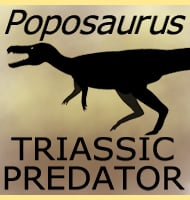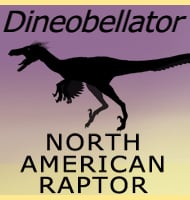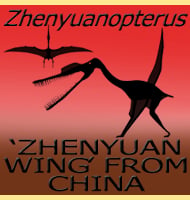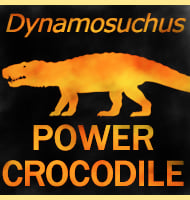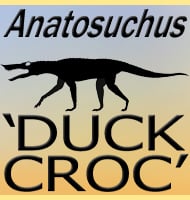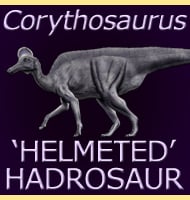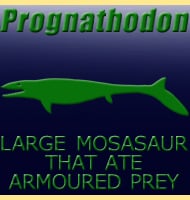When we think of crocodiles, we picture modern river-dwelling reptiles — but millions of years ago, their ancestors were bigger, stranger, and more powerful than anything in today’s waters. These ancient predators lived everywhere you can imagine: deep oceans, thick forests, even dry deserts.
Quick note: We’re using “prehistoric crocodiles” to mean both true crocodiles and their extinct relatives. Think of it as the extended crocodile family tree that goes back over 200 million years.
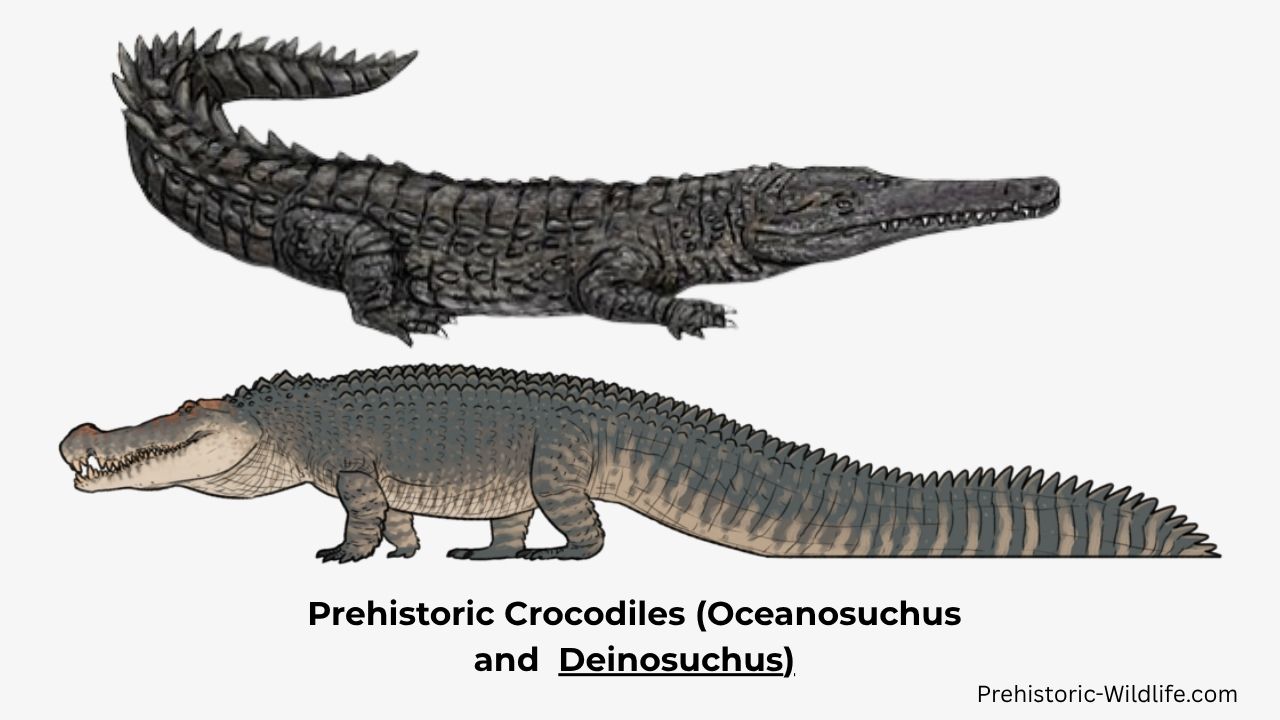
In this article, we’ll explore 21 prehistoric crocodiles that show just how amazing these ancient reptiles were — from giants that hunted dinosaurs to weird plant-eaters that looked nothing like modern crocs.
Prehistoric crocodiles belong to a group called Crocodyliformes. This includes all modern crocodilians (alligators, crocodiles, gharials, and caimans) plus their extinct relatives. While today’s crocodiles mostly hang out in rivers and swamps, their prehistoric cousins lived almost everywhere.
Here’s when these creatures ruled the Earth:
- Triassic Period (252-201 million years ago): First crocodile ancestors appeared as small land animals
- Jurassic Period (201-145 million years ago): Some moved into oceans; many new types evolved
- Cretaceous Period (145-66 million years ago): Giant species appeared; peak diversity
- Cenozoic Era (66 million years ago-today): Modern groups appeared; some giants survived until recently
The crazy thing? Prehistoric crocodiles weren’t stuck in water like modern ones. Some ran on land like dogs, others had flippers like dolphins, and a few even ate plants instead of meat.
The 21 Prehistoric Crocodiles
1. Deinosuchus – The Dinosaur-Eating Giant
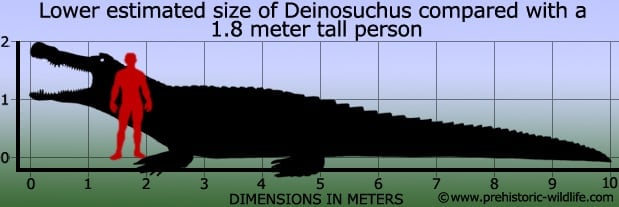
- When: 82-73 million years ago (mya)
- Where: North America (Western Interior Seaway)
- Size: 33-39 feet long (as long as a school bus), weighing up to 8.5 tons
- Cool Feature: Massive teeth designed for crushing bones
Deinosuchus means “terrible crocodile” — and it earned that name. This monster lurked in the Western Interior Seaway, an ancient sea that split North America in half.
We know it ate dinosaurs because scientists found hadrosaur bones with Deinosuchus tooth marks. Its bite force likely exceeded 23,000 pounds per square inch — possibly stronger than T. rex.
2. Sarcosuchus – The SuperCroc
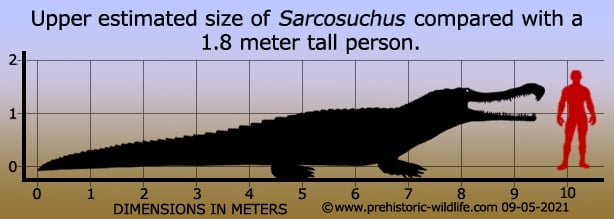
- When: 133-112 million years ago
- Where: Africa and South America (when they were connected)
- Size: 36-39 feet long, weighing 4.3-8 tons
- Cool Feature: Strange bulb on its nose, possibly for making sounds
Sarcosuchus lived when the Sahara Desert was a tropical paradise full of rivers. Its skull alone was 6 feet long — as tall as a grown man. Unlike modern crocodiles that stop growing as adults,
Sarcosuchus kept growing its whole life (50-60 years).
While it mainly ate huge fish, fossil evidence suggests it also grabbed dinosaurs that came too close to the water.
3. Purussaurus – South America’s Mega-Predator

- When: 23-5 million years ago
- Where: South America
- Size: 33-36 feet long (with some estimates up to 43 feet), weighing up to 8.4 tons
- Cool Feature: Incredibly strong bite, one of the most powerful ever
Purussaurus ruled South American rivers long after dinosaurs died out.
This giant caiman (bigger than any modern caiman, which rarely exceed 8 feet) ate everything — huge rodents, giant ground sloths, even other crocodiles.
Based on skull structure, scientists estimate its bite force at around 15,500 pounds — imagine the weight of three cars pressing down on a single point.
4. Rhamphosuchus – India’s Mysterious Giant

- When: 5-2 million years ago (Pliocene Epoch)
- Where: India
- Size: Originally thought to be 59 feet, now estimated at 26-36 feet
- Cool Feature: Long, narrow snout like modern gharials
Rhamphosuchus is a bit of a mystery.
Early scientists thought it was the biggest crocodile ever, but newer studies of more complete fossils show it was smaller (though still huge).
This ancient relative of false gharials hunted in Indian rivers, using its long snout full of sharp teeth to catch fish.
Even at its revised size, it was much larger than modern gharials, which can reach 20 feet.
5. Mourasuchus – The Duck-Billed Filter Feeder

- When: 23-5 million years ago
- Where: South America
- Size: 20-23 feet long
- Cool Feature: Super wide, flat mouth with tiny teeth
Mourasuchus breaks all the rules about crocodiles. Instead of powerful jaws, it had a ridiculously wide, flat skull — over 4 feet wide — with more than 40 tiny teeth on each side.
Evidence suggests it filter-fed like modern ducks, sweeping its head through water to catch small fish and shrimp. Imagine a crocodile the size of a pickup truck eating like a flamingo!
6. Pristichampsus – The Hoofed Land Runner
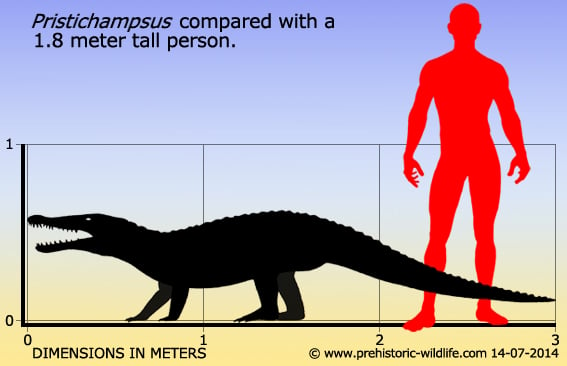
- When: 56-33 million years ago
- Where: Europe and North America
- Size: 10 feet long
- Cool Feature: Hoof-like claws and fully terrestrial lifestyle
Pristichampsus proves crocodiles weren’t always water animals.
This land hunter had long legs held straight under its body (not sprawling like modern crocs), and its toes ended in hooves instead of webbed feet.
It chased prey through ancient forests, filling the role of a wolf or big cat before those mammals evolved.
7. Stomatosuchus – The Mysterious Filter Feeder

- When: 100-94 million years ago
- Where: Egypt
- Size: 33 feet long
- Cool Feature: Extremely flat skull with unusual jaw structure
Stomatosuchus is one of paleontology’s biggest mysteries.
Its only fossil was destroyed in World War II, but what scientists saw was incredible. It had an extremely flat skull with no teeth on the lower jaw.
Some scientists speculate it might have had a pelican-style throat pouch for filter feeding, though this remains highly uncertain.
Based on the limited evidence, this giant probably fed on small fish in African rivers.
8. Metriorhynchus – The Smooth Sea Croc
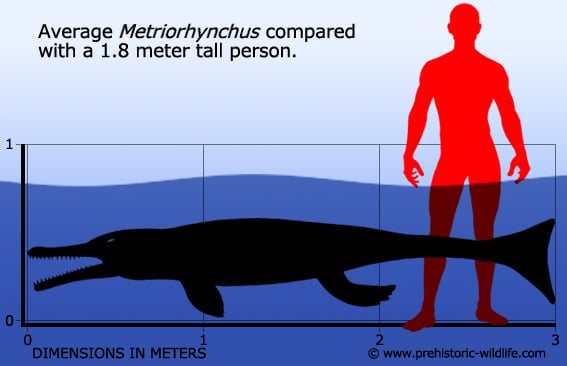
- When: 171-145 million years ago
- Where: European oceans
- Size: 10 feet long
- Cool Feature: No armor, completely smooth like a dolphin
Metriorhynchus was built for ocean life.
It ditched the typical crocodile armor for smooth skin, grew a shark-like tail fin, and turned its legs into flippers.
It couldn’t return to land at all — females probably gave birth in the water like whales do today (based on their anatomy).
Its stomach contents show it ate fish and belemnites (ancient squid relatives).
9. Dakosaurus – The Jurassic Sea Monster
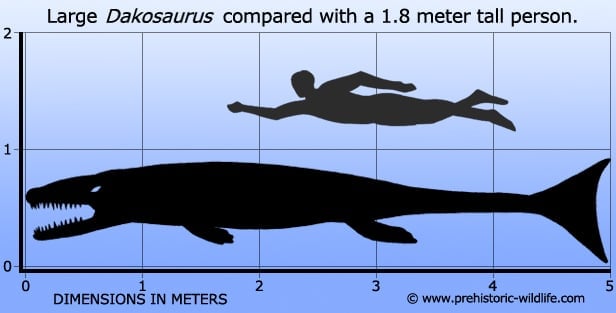
- When: 157-137 million years ago
- Where: European and South American oceans
- Size: 13-16 feet long
- Cool Feature: Huge head with steak-knife teeth
One species, Dakosaurus andiniensis from Argentina, earned the nickname “Godzilla” for its massive skull.
This ocean predator had a head more like a meat-eating dinosaur than a crocodile.
While its relatives caught fish, Dakosaurus hunted big marine reptiles, likely attacking from below like modern killer whales.
Its teeth were perfect for slicing through flesh.
10. Kaprosuchus – The BoarCroc
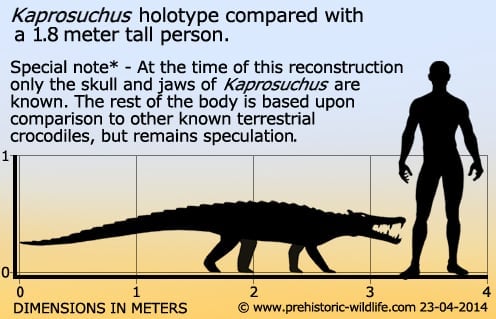
- When: 100-94 million years ago
- Where: Niger, Africa Size: 20 feet long
- Cool Feature: Three sets of huge fangs that stuck out of its mouth
Kaprosuchus looks like something from a monster movie.
Its name means “boar crocodile” because of massive tusks that jutted out even when its mouth was closed.
These 5-inch fangs, plus forward-facing eyes for depth perception, tell us this was likely an active land hunter. Based on its leg structure, it probably could gallop after prey, using its tusks to slash at dinosaurs’ legs.
11. Gryposuchus – The Giant Gharial

- When: 23-5 million years ago
- Where: South America
- Size: 33 feet long
- Cool Feature: Extremely long snout with over 80 interlocking teeth
Gryposuchus lived alongside Purussaurus but they didn’t fight over food.
While Purussaurus crushed large prey with its broad snout, Gryposuchus specialized in fish, using its narrow jaws like a fishing spear.
This division of resources allowed both giants to coexist — an ancient example of niche partitioning that ecologists study today.
12. Baurusuchus – The Land Terror
- When: 90-83 million years ago
- Where: Brazil (part of ancient Gondwana)
- Size: 11-13 feet long
- Cool Feature: Knife-like teeth totally different from water-dwelling crocs
Baurusuchus belonged to a group called baurusuchids — land predators that ruled South America while tyrannosaurs dominated the north.
This terrestrial hunter had teeth compressed like steak knives — perfect for slicing meat rather than just holding prey.
It stood tall and ran on long legs across ancient Brazil, part of a unique group of crocodiles called Notosuchia.
13. Araripesuchus – The Tiny Sprinter
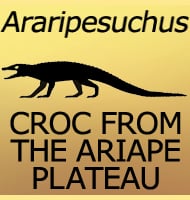
- When: 125-66 million years ago
- Where: Africa and South America
- Size: 3-6 feet long (about the size of a large dog)
- Cool Feature: Super long legs for its body size
Araripesuchus was nicknamed “RatCroc” for its small size, though it was more like an ancient greyhound.
This little crocodile sprinted across Gondwana (the southern supercontinent) on long legs, eating insects, small mammals, and possibly scavenging from dinosaur kills.
Different species adapted to environments from deserts to wetlands.
14. Sebecus – The Last Land Croc
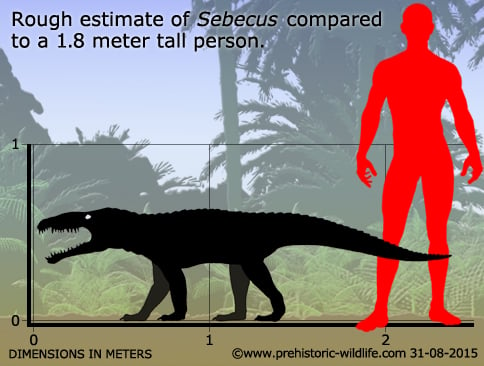
- When: 56-33 million years ago
- Where: South America
- Size: 10-13 feet long
- Cool Feature: Deep skull with slicing teeth
Sebecus belonged to a family called Sebecidae — not true crocodiles but related land predators.
This hunter prowled South American grasslands with knife-like teeth designed for cutting meat.
After sebecids went extinct, all remaining crocodilians adopted semi-aquatic lifestyles — ending millions of years of terrestrial crocodilian evolution.
15. Machimosaurus – The Turtle Crusher
- When: 161-130 million years ago
- Where: Europe and Africa
- Size: 23-33 feet long
- Cool Feature: Blunt teeth for crushing shells
Machimosaurus was the biggest marine crocodile of its time.
Unlike its fish-eating relatives, it had thick, rounded teeth perfect for crushing turtle and ammonite shells.
Fossils from Ethiopia show it survived the minor extinction between the Jurassic and Cretaceous periods, outlasting many competitors.
16. Geosaurus – The Deep Diver
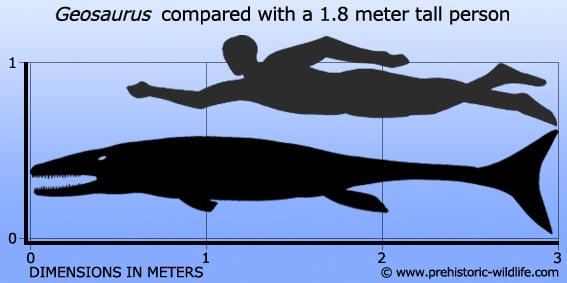
- When: 160-130 million years ago
- Where: European oceans
- Size: 10-13 feet long
- Cool Feature: Likely had salt glands for processing seawater
Geosaurus was incredibly ocean-adapted.
Evidence suggests it had salt glands (like seabirds have) to remove salt from seawater, letting it live far from shore.
Its large eyes and reinforced skull bones indicate deep diving capabilities, possibly hunting in darker waters.
No modern crocodile comes close to being this specialized for ocean life.
17. Elosuchus – The Armored River King
- When: 112-70 million years ago
- Where: Africa
- Size: 16-23 feet long
- Cool Feature: Elaborate armor patterns on its skull
Elosuchus ruled North African rivers during the age of dinosaurs, living alongside Spinosaurus.
Its skull had raised ridges and pits that probably held thick skin or horn-like shields.
This armor, plus its large size, protected it while it ambushed prey from riverbanks.
Fossil footprints show it could walk on land when needed.
18. Notosuchus – The Part-Time Vegetarian
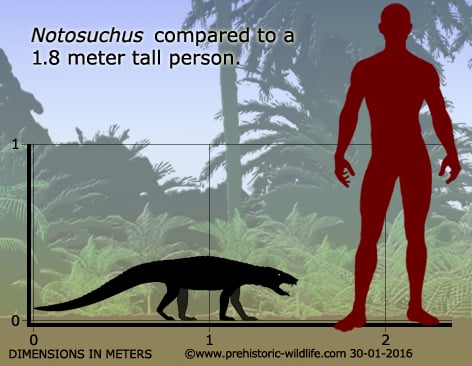
- When: 85-65 million years ago
- Where: Argentina
- Size: 5 feet long
- Cool Feature: Different types of teeth like a mammal
Notosuchus belonged to a diverse group of land crocodiles called Notosuchia.
It had different kinds of teeth — front teeth for biting, fangs for gripping, and back teeth for chewing.
Tooth wear patterns suggest it ate both plants and small animals, making it one of the only known omnivorous crocodilians.
Its forward-facing eyes gave it 3D vision for judging distances.
19. Simosuchus – The Plant-Eating Tank
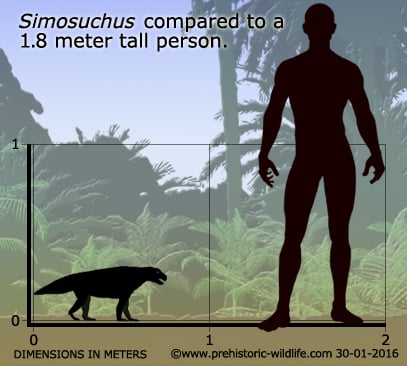
- When: 70-66 million years ago
- Where: Madagascar
- Size: 2.5 feet long (about the size of a bulldog)
- Cool Feature: Ate only plants and covered in armor
Simosuchus completely breaks the crocodile mold.
This pug-nosed herbivore from the Notosuchia group looked more like an armored groundhog than a crocodile.
It had leaf-shaped teeth for eating plants and was covered head-to-tail in bony armor — even on its belly.
It spent its days munching plants, using armor to protect itself from predators like the dinosaur Majungasaurus.
20. Theriosuchus – The Tiny Forest Hunter
- When: 157-66 million years ago
- Where: Europe and Asia (ancient Laurasia)
- Size: 3-6.5 feet long
- Cool Feature: Small size but survived 90 million years
Theriosuchus proves prehistoric crocodiles weren’t all giants.
This small croc, about the size of a medium dog, hunted insects and small animals in ancient forests.
Different species lived across the northern supercontinent Laurasia for 90 million years — showing that being small could be just as successful as being huge.
21. Allodaposuchus – The Missing Link
- When: 86-66 million years ago
- Where: Europe
- Size: 10-13 feet long
- Cool Feature: Shows how ancient crocs evolved into modern ones
Allodaposuchus might seem boring compared to the others, but it’s super important for understanding crocodile evolution.
This medium-sized predator lived on the islands that made up Late Cretaceous Europe. Its skeleton shows features halfway between primitive crocodilians and modern ones.
Some survived right up to the asteroid impact — among the last to see the dinosaur age.
The Biggest Prehistoric Crocodiles Ever
Who was the largest? It’s hard to say for sure because we rarely find complete skeletons.

Size Comparison
- Purussaurus: Up to 36 feet long (some estimates reach 43 feet), 8.4 tons
- Sarcosuchus: 39 feet long, 4.3-8 tons
- Deinosuchus: 39 feet long, 8.5 tons
- Modern Saltwater Crocodile: 20 feet long, 1,650 pounds
- Modern Gharial: Can reach 20 feet but much lighter build
These giants got so big through different strategies. Some, like Sarcosuchus, never stopped growing throughout their lives. Others, like Purussaurus, developed super-thick bones to support massive weight.
The largest modern saltwater crocodile ever recorded was just over 20 feet — impressive today, but small compared to these prehistoric monsters.
The Weirdest Prehistoric Crocodiles
Evolution created some truly bizarre crocodiles that seem almost impossible:
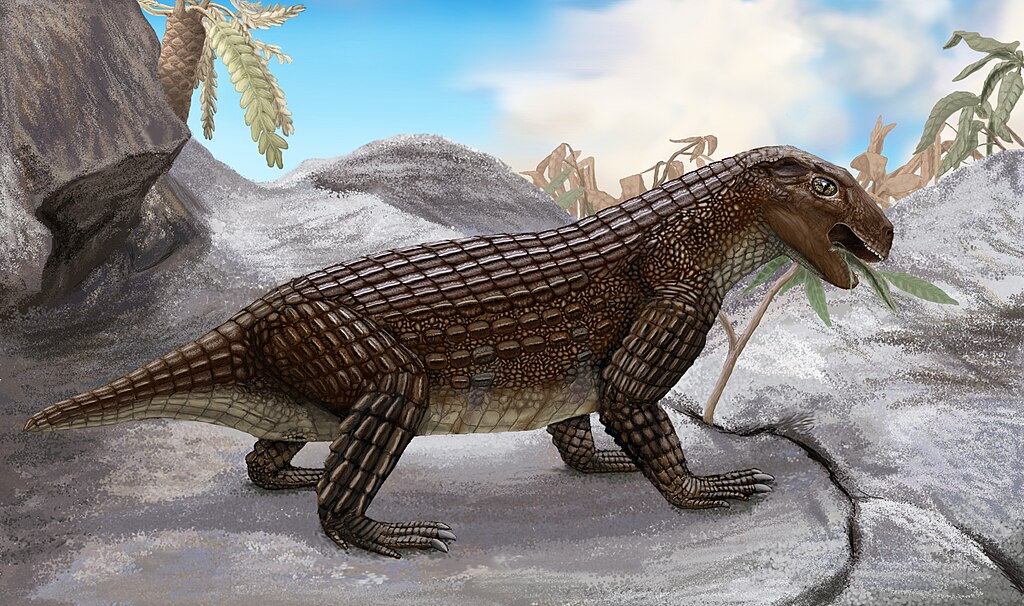
Simosuchus gave up meat entirely to eat plants. At just 2.5 feet long, it looked more like an armored turtle without a shell than a crocodile.
Mourasuchus had the widest mouth relative to its body of any crocodile, over 4 feet wide! It filter-fed like a whale, which no modern crocodile does.
Kaprosuchus had tusks like a warthog that stuck out even with its mouth closed. Combined with its likely ability to gallop on land, it was like something from a horror movie.
Stomatosuchus remains a mystery, some scientists speculate it might have had a pelican-like throat pouch, though we can’t be certain since its only fossil was destroyed. If true, it would be the strangest feeding method any crocodile ever evolved.
These oddballs show that prehistoric crocodiles filled roles we’d never expect from plant-eaters to filter-feeders to land runners.
Crocodiles vs. Dinosaurs: Who Would Win?
Prehistoric crocodiles and dinosaurs lived together for over 135 million years.
This wasn’t a peaceful relationship, it was an endless battle for survival.
In South America, land crocodiles like Baurusuchus were the top predators, doing the same job T. rex did in North America. In African rivers, Sarcosuchus grew big enough to grab drinking dinosaurs and drag them underwater.
Could They Really Kill a T. rex?
This is everyone’s favorite question! Deinosuchus and T. rex actually lived at the same time in North America, but in different places.
Deinosuchus liked coastal swamps along the Western Interior Seaway while T. rex preferred inland areas, so they probably never met.
But here’s what we know for sure: Deinosuchus definitely hunted large dinosaurs.
Scientists have found hadrosaur (duck-billed dinosaur) bones with Deinosuchus tooth marks.
These dinosaurs weighed several tons — not T. rex size, but still huge.
Could Deinosuchus kill a healthy adult T. rex? Probably not on land. But a young T. rex drinking at the water’s edge? Or an injured one crossing a river?
That’s a different story. In the water, Deinosuchus had all the advantages — ambush tactics, incredible bite force, and the element of surprise.
Why Did These Giants Disappear?
The extinction of prehistoric crocodiles wasn’t one big disaster — it happened slowly over millions of years. Here’s what went wrong:
Climate Change: Starting 14 million years ago, Earth got colder. The warm, swampy homes that giants like Purussaurus needed started disappearing. As temperatures dropped and seasons became more extreme, tropical wetlands shrank.
Habitat Loss: Sea levels went up and down many times, flooding and draining the coastal plains where many big crocodiles lived. When wetlands disappeared, crocodile populations got cut off from each other and died out one by one.
Competition: After dinosaurs went extinct, mammals took over. Early whales pushed marine crocodiles out of the oceans. On land, mammal predators took over the hunting grounds that land crocodiles once ruled.
Size Problems: Giant animals need tons of food and warm weather all year. As Earth cooled and food became harder to find, being gigantic became a disadvantage instead of an advantage.
The survivors, modern crocodiles, alligators, and gharials made it because they were flexible. They could go months without eating, survive temperature changes, and adapt to new environments. Today’s crocodilians are the ultimate survivors, having lived through every mass extinction since the Triassic Period.
Conclusion
Prehistoric crocodiles ruled ancient Earth in ways that seem impossible today. From tiny Theriosuchus dodging dinosaur feet to massive Purussaurus dominating South American rivers, these creatures tried every survival strategy imaginable.
They became ocean swimmers with dolphin-like tails, land runners with hoofed feet, and even armored plant-eaters.
Their story spans 230 million years — an incredible example of evolution’s creativity. While we’ve lost the giants and the weird ones, modern crocodilians carry on this ancient legacy.
People call them “living fossils,” but that’s not really fair. They’re champions of survival, perfected over millions of years.
Next time you see a crocodile lying perfectly still on a riverbank, remember its family history.
Its ancestors galloped across land, swam in ancient oceans, and grew large enough to eat dinosaurs.
They survived the asteroid that killed the dinosaurs, made it through ice ages, and adapted to our modern world.
Frequently Asked Questions
What was the biggest prehistoric crocodile?
Purussaurus from South America probably holds the record at up to 36 feet long (with some estimates reaching 43 feet) and 8.4 tons — about as long as a semi-truck and heavier than an elephant. However, Sarcosuchus and Deinosuchus were nearly as big. The exact winner depends on which fossil reconstructions prove most accurate. All three were at least twice as long as today’s biggest crocodiles.
Did crocodiles really live with dinosaurs?
Absolutely! Crocodiles first appeared about 230 million years ago in the Late Triassic Period, evolved alongside dinosaurs through the Jurassic and Cretaceous, and survived the mass extinction 66 million years ago that killed the dinosaurs. Species like Deinosuchus, Sarcosuchus, and Baurusuchus lived at the same time as famous dinosaurs and sometimes ate them.
What killed the giant prehistoric crocodiles?
Earth got colder over millions of years, destroying warm swamps
Rising and falling sea levels destroyed coastal wetlands
Mammals took over many ecological roles after dinosaurs died
Being giant became a disadvantage in the cooler climate Unlike the dinosaurs’ sudden extinction, giant crocodiles disappeared gradually over millions of years.
Are today’s crocodiles related to Sarcosuchus?
Modern crocodiles aren’t direct descendants of Sarcosuchus — think of them more like distant cousins. Sarcosuchus belonged to an extinct family called Pholidosauridae, while modern crocodiles descended from smaller species that survived the dinosaur extinction. They share a common ancestor but followed different evolutionary paths.
Could prehistoric crocodiles walk on land?
Many could! Species like Pristichampsus, Baurusuchus, and Kaprosuchus had long legs positioned directly under their bodies (not sprawling like modern crocs). This likely let them run and even gallop like dogs or horses. Some had hooves instead of webbed feet. These land specialists actively chased prey, totally different from modern crocodiles that ambush from water.
What did prehistoric crocodiles eat?
They ate almost everything you can imagine:
Giants (Deinosuchus, Purussaurus): Dinosaurs, huge fish, other marine reptiles
Ocean species (Dakosaurus): Fish, squid-like animals, marine reptiles
Filter feeders (Mourasuchus): Tiny fish, shrimp, mollusks
Land hunters (Baurusuchus): Small dinosaurs, mammals, lizards
Plant-eaters (Simosuchus): Leaves, seeds, possibly fruits
Omnivores (Notosuchus): Plants, insects, small animals
This variety is way beyond modern crocodiles, which only eat meat.
How fast could land crocodiles run?
While we can’t measure their exact speeds from fossils, scientists estimate based on leg structure and body proportions. Land specialists like Pristichampsus and Baurusuchus likely could run 15-25 miles per hour in short bursts — similar to modern monitor lizards. Kaprosuchus, with its longer legs, might have been even faster. Compare that to modern crocodiles, which can only manage quick lunges on land.
Which prehistoric crocodile had the strongest bite?
Based on skull structure and jaw muscle attachment points, Purussaurus likely had the strongest bite at an estimated 69,000 newtons (about 15,500 pounds of force). Deinosuchus comes second with about 23,000 PSI. For comparison, T. rex had about 12,800 pounds of bite force, and modern saltwater crocodiles max out around 3,700 PSI.
Did any prehistoric crocodiles survive the Ice Age?
Yes! Several species lived through the Pleistocene Ice Ages (2.6 million to 11,700 years ago). Crocodylus thorbjarnarsoni was a giant crocodile in Africa that survived until about 2 million years ago. In South America, giant caimans persisted until relatively recently. The cooling climate eventually eliminated the truly giant species, but normal-sized crocodilians adapted and survived.
Were prehistoric crocodiles warm-blooded?
Most were probably cold-blooded (ectothermic) like modern crocodiles, but some land-dwelling species might have been different. Fast runners like Baurusuchus and sebecids had active lifestyles more like mammals, which suggests they might have had higher metabolisms. Marine species like Metriorhynchus probably stayed warm through gigantothermy — being so big that they retained body heat even in cool water. However, we can’t know for sure from fossils alone.
How do we know what prehistoric crocodiles looked like?
Scientists piece together clues from multiple sources:
Fossils: Bones, teeth, and rarely skin impressions
Skull shapes: Tell us about diet and lifestyle
Limb structure: Shows if they swam, walked, or ran
Tooth marks: On prey bones reveal what they ate
Comparison: With modern crocodiles helps fill gaps
Computer models: Test how they moved and hunted
Trace fossils: Footprints and tail drags show behavior
Each new fossil discovery helps complete the picture, though some mysteries (like whether Stomatosuchus had a throat pouch) may never be solved.
Why are crocodiles called “living fossils”?
Crocodiles have changed remarkably little in the last 85 million years. The basic crocodilian body plan — long snout, powerful tail, armor plating, semi-aquatic lifestyle — has remained successful since the Late Cretaceous. However, calling them “living fossils” understates their success. They’re not primitive leftovers but highly evolved survivors that found a winning formula and stuck with it.


